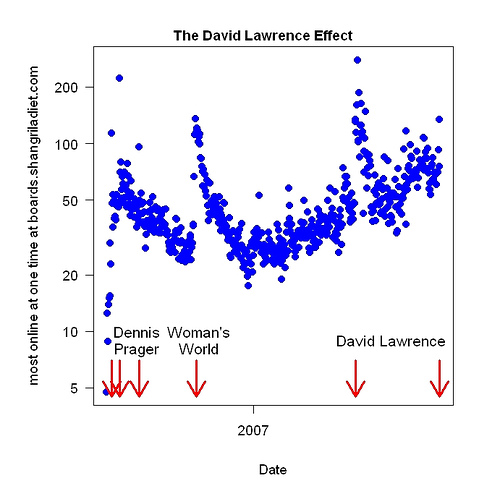The most interesting recent posts on the Shangri-La Diet forums have been from Roger Garrett (id Fastneasy), who has come up with what seems to be an especially potent version of the diet: He has a three-hour food window every day that starts when he eats his first meal; the rest of the day, he drinks sugar water and doesn’t eat anything else. He takes weekends off.
He’s 36 years old. Starting weight: 269 pounds. After about a month, he writes, “I’ve lost 24 pounds so far. This has been incredibly easy! No hunger, no struggle, and tons of energy.” He did almost the same thing eight years ago with one difference: no sugar water.
The difference between then and now is [now] I’m shedding the fat at three times the speed and with no anguish and fatigue that’s associated with the fasting. I’m not hungry, my stomach doesn’t growl. I have tons of energy and feel great in the morning. Also the funny thing, after waking in the morning after fasting for 21 hours, I’m not starving. I remember with the fast before I would wake in the night stomach growling and ready to eat. When I would wake up, I could kill to eat.
